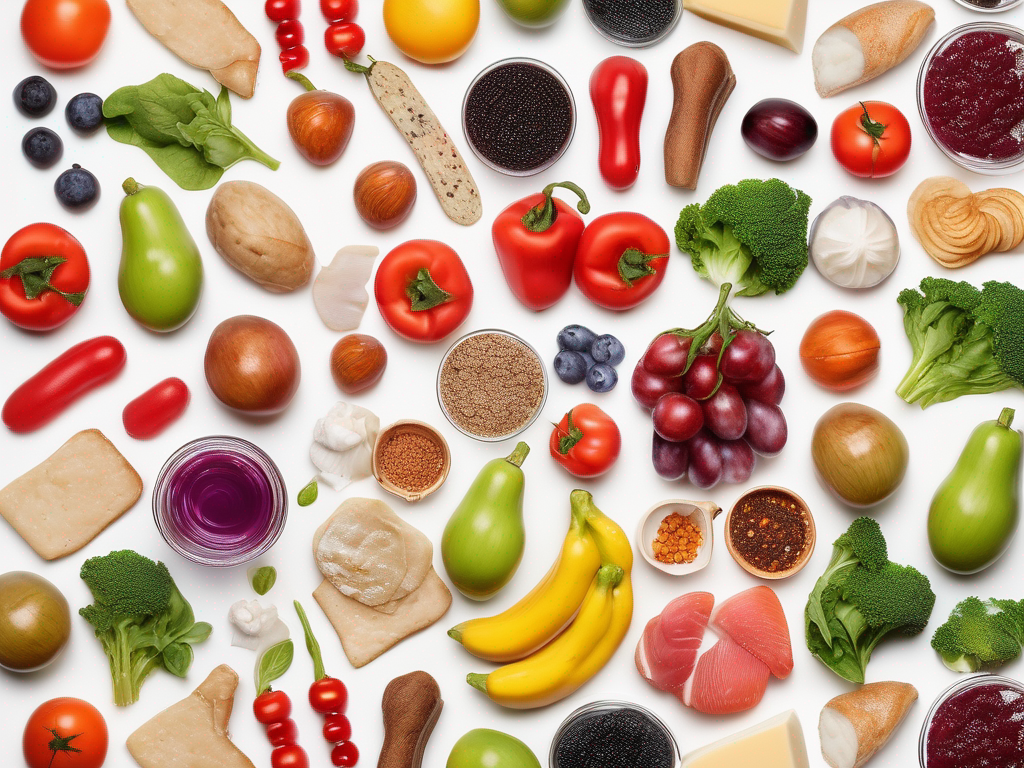
How to Determine If Food Has Expired: A Comprehensive Guide
Get Your Free Food Safety Cheat Sheet
30 most common foods with instant answers. Print it and stick it on your fridge—completely free!
How to Determine If Food Has Expired: A Comprehensive Guide
In today's fast-paced world, it's easy to overlook the expiration dates on the food items we purchase. However, consuming expired food can pose serious health risks. Knowing how to identify if a food item has expired is crucial for maintaining food safety. In this guide, we will explore the best ways to determine if a food item is expired.
Understanding Expiration Dates
What Do Expiration Dates Mean?
- "Use By" Date: This date is the last day recommended for the use of the product while at peak quality.
- "Sell By" Date: This date is intended for retailers and indicates the last day a product should be sold.
- "Best By" Date: This date suggests when a product may start to lose its freshness or peak quality.
Importance of Expiration Dates
- Expiration dates help ensure food safety and quality.
- Consuming expired food can lead to foodborne illnesses.
Signs of Spoiled Food
Visual Changes
- Mold or discoloration
- Unusual texture or sliminess
- Swollen or bulging packaging
Smell Test
- Foul or off-smelling odors
- Rancid or sour smell
- Strong ammonia or sulfur smell
Texture
- Changes in texture, such as a slimy or gritty feel
- Mushiness or sogginess
- Separation of liquids or clumping of solids
Storage Tips to Prolong Shelf Life
Proper Refrigeration
- Store perishable items in the refrigerator promptly.
- Keep the refrigerator temperature at 40°F (4°C) or below.
- Use a thermometer to monitor the fridge temperature.
Freezing Food Items
- Package food items properly to prevent freezer burn.
- Label items with the date of freezing for easy tracking.
- Follow recommended freezing times for different food items.
Pantry Storage
- Keep pantry items in a cool, dry place away from direct sunlight.
- Use airtight containers to store dry goods like grains and cereals.
- Rotate pantry items regularly to use older items first.
Tips for Safe Food Handling
Cross-Contamination Prevention
- Use separate cutting boards for raw meats and produce.
- Wash hands thoroughly before and after handling food.
- Clean and sanitize kitchen surfaces regularly.
Proper Cooking Temperatures
- Use a food thermometer to ensure meat is cooked to the recommended temperature.
- Cook eggs until both the yolk and white are firm.
- Reheat leftovers to 165°F (74°C) to kill bacteria.
Food Label Reading
- Understand food label terminology such as "organic," "natural," and "non-GMO."
- Check for allergen warnings on packaged foods.
- Read ingredient lists to avoid harmful additives.
Conclusion
Ensuring that the food we consume is safe and has not expired is crucial for maintaining good health. By understanding expiration dates, recognizing signs of spoiled food, and following proper storage and handling practices, we can reduce the risk of foodborne illnesses and enjoy fresh, high-quality food. Remember, when in doubt, it's best to err on the side of caution and discard any questionable food items. Prioritizing food safety is a simple yet effective way to protect yourself and your loved ones.
Authoritative Food Safety References
These agencies and university labs inform every tip and health precaution we publish.
USDA FoodKeeper – Cold Storage Guidelines
Official refrigerator, freezer, and pantry timelines maintained by the U.S. Department of Agriculture.
Visit USDA FoodKeeperFDA Produce Safety Rule & Grower Guidance
Field-to-fridge handling practices that prevent contamination of fruits, vegetables, and leafy greens.
Visit FDA Produce SafetyCDC Foodborne Illness Prevention Hub
Surveillance-backed guidance on pathogens, symptoms, and steps to reduce foodborne illness risk.
Visit CDC Food SafetyUC Davis Postharvest Technology Center
University research detailing optimal storage atmospheres for produce after harvest.
Visit UC Davis PostharvestPenn State Extension – Home Food Preservation & Safety
Peer-reviewed extension bulletins on safe canning, chilling, and reheating practices.
Visit Penn State ExtensionGet Your Free Food Safety Cheat Sheet
30 most common foods with instant answers. Print it and stick it on your fridge—completely free! Want more? Upgrade to the complete guide with 70+ foods.
Scan your food directly and get instant safety info using our AI-powered camera feature.